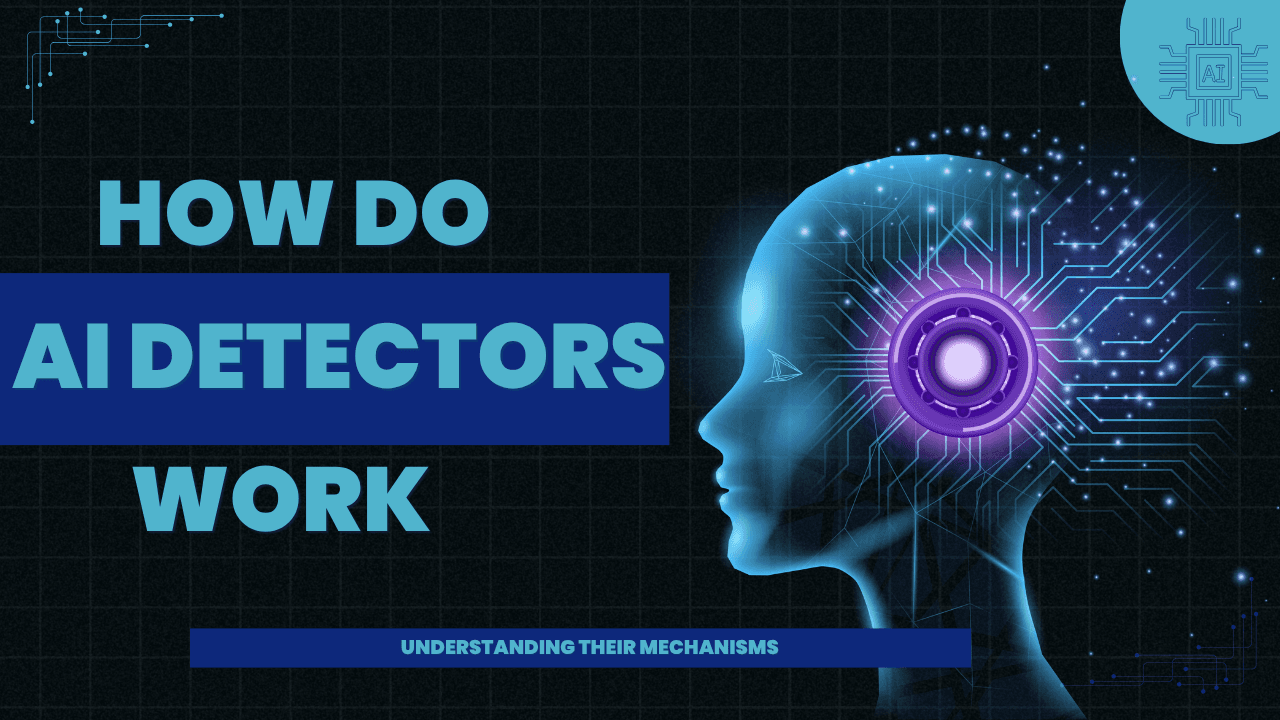As AI technology continues to evolve and permeate various fields, distinguishing between content written by humans and content generated by machines has become increasingly important. From academics to content creators and publishers, many industries now rely on AI detectors to assess the authenticity of the written word.
But what exactly are AI detectors, and how do they manage to spot AI-generated content? In this article, we’ll take a closer look at how AI detectors work, their accuracy, limitations, and how tools like Humanize AI Text can help refine AI-generated text to make it sound more human.
What Are AI Detectors?
AI detectors are specialized tools designed to help users identify whether a particular piece of content has been written by artificial intelligence. These detectors analyze a range of features in the text, looking for patterns, structures, and other key characteristics that are common in AI-generated content.
By comparing these elements to the typical patterns found in human-written text, AI detectors can estimate the likelihood that a text was created by a machine rather than a person.
While AI detectors have become increasingly popular in industries like education, media, and publishing, their purpose isn’t just about spotting machine-written content. These tools are also used to maintain the integrity and originality of content, ensuring that submissions—whether academic papers, blog posts, or social media content—are authentic and not derived from AI.
Key Features of AI Detectors
- Machine Learning Models: AI detectors use machine learning to analyze text, enabling the system to “learn” the differences between human and AI writing by studying large datasets of both.
- Pattern Recognition: These tools identify specific patterns in text—such as consistency in sentence structure or unnatural predictability—that point to AI involvement.
How Do AI Detectors Work?
AI detectors operate on several key principles and methods, relying on complex algorithms that process large amounts of text data to identify distinct patterns. These methods focus on various aspects of writing that typically differentiate human writing from AI-generated content. Let’s dive into the main mechanisms behind AI detection:

How Do AI Detectors Work
1. Sentence Structure and Predictability
Human writers are naturally unpredictable in their sentence structure. We might start a sentence one way and then change direction midway, or we may insert phrases that are uniquely personal to our writing style. AI, on the other hand, tends to follow more predictable patterns. Sentences are often grammatically correct, but they lack the depth and variation found in human writing.
AI detectors look for these patterns of consistency. They check whether the sentence structures feel too "perfect," or whether the flow of ideas is too structured and linear. In human writing, there’s typically more variety, from complex sentences to quick, punchy statements. When AI-generated text follows an overly uniform structure, it can raise a flag for detection.
2. Repetition and Uniformity
One of the easiest ways to spot AI-generated text is through repetition. Early AI models, especially those that weren’t as sophisticated, often repeated words or phrases throughout the text. While newer models have gotten better at avoiding blatant repetition, they still tend to produce writing that feels a bit too uniform.
Human writers, however, are more likely to mix things up. We often choose different expressions or reword ideas as we go, keeping the language fresh and engaging. When an AI detector spots an unusual amount of repetition in a text, it might suspect that the content was machine-generated.
3. Metadata Traces
Some AI tools embed hidden markers or metadata in the content they generate. These can be picked up by detectors, which analyze the text’s background information to trace it back to its AI origin.
For example, some AI models may add invisible markers to identify the tool used to generate the content. However, this is a more nuanced method, and it’s not foolproof, especially as AI evolves to hide these traces more effectively.
4. Perplexity and Burstiness
Two key concepts that AI detectors focus on are perplexity and burstiness.
- Perplexity refers to the unpredictability of a sequence of words. While AI-generated text may be grammatically flawless, it often follows patterns that are easy to predict. On the other hand, human writing is often more unpredictable, with unexpected word choices and shifts in phrasing. This higher unpredictability, or perplexity, is a hallmark of human authorship.
- Burstiness describes the variation in sentence length and complexity. Humans tend to vary their sentence structure by mixing short, punchy sentences with longer, more complex ones. AI-generated text, however, often tends to stick to a more uniform structure. When AI detectors analyze burstiness, they look for those natural fluctuations in sentence length and rhythm that characterize human writing.
By examining both perplexity and burstiness, AI detectors can identify whether a piece of text was likely generated by AI or written by a human.
How Reliable Are AI Detectors?
AI detectors have made impressive progress in identifying machine-generated content. However, they are not without their limitations. There are several factors that can influence the reliability of AI detectors:
1. Text Length
AI detectors work better on longer pieces of text because they have more data to analyze. Shorter passages may not provide enough context for the AI detector to make an accurate assessment. Short text may lack the clear patterns that detectors rely on to differentiate between human and AI writing.
2. AI Model Sophistication
The more advanced the AI model, the harder it becomes to detect machine-generated content. Newer models, like GPT-4, produce text that is much closer to human writing in terms of complexity and natural flow. This makes it increasingly difficult for detection systems to pinpoint whether the text was generated by AI.
3. Mixed Human-AI Content
One of the most challenging aspects of AI detection is content that has been written by AI and then edited by a human. This type of hybrid content can be much harder for AI detectors to analyze, as the human revisions may obscure the patterns typically found in AI-generated text.
4. Unconventional Writing Styles
AI detectors may struggle with detecting AI-generated content if it’s written in a highly creative or unconventional style. AI is often trained on specific writing patterns, so it can be less effective at identifying texts that break traditional writing conventions. If a writer employs a unique style, this could confuse the detector, leading to false positives or negatives.
Limitations of AI Detectors
Despite their advances, AI detectors have several limitations that must be taken into account:

Limitation of ai detectors
1. False Positives and False Negatives
AI detectors are not foolproof and can sometimes misidentify human-written content as AI-generated (false positives) or fail to detect AI-generated content (false negatives). These errors can have serious consequences, especially in academic or professional settings where content originality is critical.
2. Bias Toward Certain Writing Styles
AI detectors are trained on datasets that may not fully represent the diversity of writing styles. As a result, certain types of writing—such as creative or informal language, or the writing of non-native English speakers—may be unfairly flagged as AI-generated.
3. Difficulty with Advanced AI Models
As AI technology continues to improve, the content it generates becomes more sophisticated. AI detectors often lag behind the latest advancements in AI, making it harder for them to detect newer models that produce more human-like text. This limitation is particularly relevant as tools like GPT-4 and other next-generation models are released.
4. Inability to Provide Definitive Proof
Although AI detectors can estimate the likelihood that a piece of content was generated by AI, they cannot provide definitive proof. They give a probabilistic result based on the text’s characteristics, but they cannot categorically state that the text was written by a machine.
How Humanize AI Text Can Help
If you are working with AI-generated content and want to make it sound more human, AI detection tools might not always be enough. That’s where humanization tools like Humanize AI Text come in. These tools help refine AI content by making it more nuanced and engaging, ensuring it sounds like it was written by a human. By improving sentence structure, adding variation, and making the text more natural, humanization tools can significantly reduce the chances of AI content being flagged by detectors.
Best Practices for Using AI Detectors
To ensure AI detectors are used responsibly and effectively, here are some best practices to follow:
1. Understand the Limitations
AI detectors are not flawless, and they can sometimes make mistakes. Use them as a guide, not as the final word. Be aware of their limitations and consider other methods, such as plagiarism checkers, for a more comprehensive assessment.
2. Use Multiple Detection Tools
No single detection tool is perfect. Using a combination of AI detection, plagiarism checking, and authorship tracking provides a more thorough analysis of content authenticity.
3. Evaluate Context
Context is crucial when interpreting the results of AI detectors. Always consider the broader context in which the text was written. If the text seems out of character for the writer or is drastically different from their typical style, it may warrant further investigation.
4. Maintain Transparency
In academic and professional environments, transparency is key. If AI detection is used, make sure to communicate its role clearly, and combine it with other verification methods to ensure fairness.
Conclusion
AI detectors have become indispensable tools in the fight against machine-generated content. They work by analyzing writing patterns, structure, and predictability, but they have their limitations. As AI technology evolves, so too must the tools designed to detect it. It’s essential to use AI detectors alongside other methods—such as plagiarism checkers and human judgment—for the most accurate assessment of content authenticity.
To improve AI-generated content, tools like Humanize AI Text can help refine text, making it more human-like and reducing the chances of detection. As the landscape of AI-generated content continues to evolve, so too will the tools that help us navigate it responsibly.
Frequently Asked Questions
How does an AI content detector work?
AI content detectors analyze text patterns, sentence structures, and stylistic choices to estimate the likelihood that content was generated with AI. These tools are trained on large datasets of human and AI-generated text, helping them identify probable AI usage.
How accurate are AI content detectors?
AI detectors are not 100% accurate. They provide a probabilistic analysis, meaning they can misidentify human-written content or fail to detect AI-generated content, especially if the text is from a newer or advanced AI model.
Why do AI detectors sometimes flag human-written content?
AI detectors may flag human-written content if it follows repetitive patterns, is overly formal, or lacks personal nuance. Non-native English speakers or those with unique writing styles might also be flagged due to differences in writing patterns.
Should I rely on AI detectors to verify content authenticity?
AI detectors are useful for estimating the likelihood of AI involvement, but they should not be the sole method of verification. Use them alongside plagiarism checkers, authorship tracking, and human judgment for the most accurate evaluation.
Why does AI writing sound overly formal or structured?
AI models are trained on massive datasets, which helps them mimic text. While the output is often clear and well-structured, it usually lacks the nuance of human expression, making it sound formal, predictable, or formulaic. If you’re looking for an easy way to make your AI-generated writing more engaging, try our AI humanizer tool, which improves flow and phrasing so your content sounds more natural and is easier to read.


